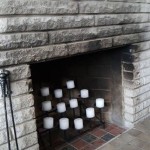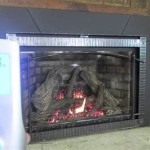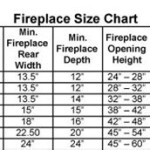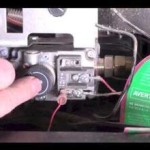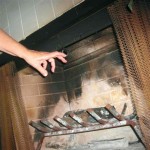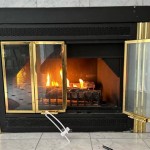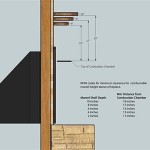The Enduring Appeal of Vintage Cast Iron Gas Fireplace Inserts
Vintage cast iron gas fireplace inserts represent a marriage of historical craftsmanship and functional heating technology. These inserts, often salvaged from older homes or antique dealers, offer a unique aesthetic and a practical alternative to traditional wood-burning fireplaces. Their enduring appeal lies in their durability, intricate designs, and the convenience of gas as a fuel source.
The use of cast iron as a primary material provides inherent benefits. Cast iron is known for its exceptional heat retention properties. It absorbs heat efficiently and radiates it steadily into the room, creating a comfortable and consistent warmth. This characteristic makes vintage cast iron gas fireplace inserts highly effective at heating spaces, particularly compared to more modern, less substantial alternatives.
Furthermore, cast iron is incredibly durable. A well-maintained insert can last for generations, resisting warping and cracking under the stress of repeated heating and cooling cycles. This longevity makes vintage units a potentially sustainable and cost-effective option for homeowners seeking a long-term heating solution and a distinctive decorative element.
Aesthetic Value and Historical Significance
Beyond their functional advantages, vintage cast iron gas fireplace inserts possess significant aesthetic value. Many units feature ornate castings, intricate patterns, and decorative details that reflect the artistic styles of their respective eras. Victorian-era inserts, for example, often showcase elaborate floral motifs, classical figures, and scrolled embellishments. Art Nouveau designs incorporate flowing, organic forms, while Art Deco inserts emphasize geometric shapes and streamlined silhouettes.
The patina of age, often acquired over decades of use, adds to the charm of these inserts. The subtle variations in color and texture, resulting from oxidation and wear, create a unique and characterful finish that is difficult to replicate with modern reproductions. This patina serves as a tangible link to the past, connecting homeowners to the history of their homes and the craftsmanship of previous generations.
The historical significance of these inserts extends beyond their aesthetic appearance. They represent a specific period in home heating technology and design. Studying the construction and features of a vintage insert can provide insights into the manufacturing techniques, fuel sources, and heating practices of a bygone era. Restoring and preserving these inserts helps to maintain a tangible connection to the past and safeguard a valuable aspect of architectural heritage.
The process of acquiring a vintage cast iron gas fireplace insert often involves searching through antique shops, salvage yards, and online marketplaces. Each unit has its own unique history and story, making the search a rewarding experience for enthusiasts. Understanding the provenance of an insert, including its original manufacturer and the home it was salvaged from, can add to its perceived value and historical significance.
Considerations for Installation and Safety
Installing a vintage cast iron gas fireplace insert requires careful planning and attention to safety. Due to the age of these units, it is crucial to have them thoroughly inspected by a qualified professional before installation. This inspection should assess the structural integrity of the cast iron, the condition of the gas lines and burners, and the overall safety of the unit.
In many cases, vintage inserts may require restoration or repair to ensure they meet current safety standards. This may involve replacing corroded or damaged components, relining the firebox, and updating the gas valve and controls. It is essential to use compatible replacement parts and follow the manufacturer's recommendations for repairs.
Proper ventilation is paramount for the safe operation of any gas fireplace. A vintage insert must be connected to a properly sized and functioning chimney or vent system. The chimney should be inspected for obstructions and structural damage, and it may need to be relined to ensure it can safely vent the combustion gases. Carbon monoxide detectors should be installed in the vicinity of the fireplace to provide an early warning of any potential leaks.
Local building codes and regulations may also impose specific requirements for the installation and operation of gas fireplaces. It is essential to consult with local building authorities and obtain any necessary permits before proceeding with the installation. Compliance with these regulations will help to ensure the safety and legality of the installation.
Furthermore, professional installation is highly recommended. A qualified technician can ensure that the insert is properly connected to the gas line, that the venting system is functioning correctly, and that all safety features are properly installed and tested. Professional installation can minimize the risk of gas leaks, carbon monoxide poisoning, and other potential hazards.
Maintenance and Care for Longevity
Maintaining a vintage cast iron gas fireplace insert is essential for preserving its beauty, functionality, and safety. Regular cleaning and inspection can help to prevent corrosion, identify potential problems, and ensure the continued safe operation of the unit.
The exterior of the insert can be cleaned with a soft cloth and mild soap and water. Avoid using abrasive cleaners or scouring pads, as these can damage the surface finish. For stubborn stains or rust, specialized cast iron cleaners or polishes may be used. It is essential to follow the manufacturer's instructions carefully and test the product in an inconspicuous area before applying it to the entire surface.
The interior of the firebox should be cleaned periodically to remove soot and ash. This can be done with a brush and vacuum cleaner. The burners should also be cleaned regularly to remove any debris that may be blocking the gas flow. A qualified technician can perform this cleaning during an annual maintenance inspection.
The gas lines and connections should be inspected annually for leaks. A simple test can be performed by applying soapy water to the connections and looking for bubbles. If any leaks are detected, the gas supply should be shut off immediately, and a qualified technician should be called to repair the leak.
The chimney or vent system should also be inspected annually for obstructions and damage. Birds' nests, leaves, and other debris can block the chimney and prevent proper venting. Structural damage, such as cracks or crumbling brickwork, can also compromise the safety of the system. A professional chimney sweep can perform this inspection and make any necessary repairs.
Regular maintenance and care will help to ensure that a vintage cast iron gas fireplace insert remains a beautiful and functional centerpiece in the home for many years to come. By investing in proper care and maintenance, homeowners can preserve the historical significance, aesthetic value, and functional benefits of these enduring heating appliances.

For Details Cast Iron Fireplace Insert Gas

Cast Iron Gas Fireplace Insert Antique Victorian Design Amazing Detail

Refinished Highly Ornate American Victorian Era C 1890 S Antique Interior Residential Cast Iron Perfection Line Copper Plated Fireplace Gas Insert

Antique Cast Iron Fireplace Electric Gas Flamerite Fires

Original 19th Century Salvaged Chicago Ornamental Cast Iron Interior Residential Fireplace Gas Insert With Old Gold Finish

Aston Integra Cast Iron Fireplace Insert Edwardian Fireplaces

C 1895 1900 Original Antique American Black Enameled Cast Iron Interior Residential Fireplace Gas Insert With Ornamental Ash Grate

Gallery Gloucester Cast Iron Fireplace Insert Flames Co

Gas Inserts Victorian Fireplace

Original 19th Century Antique American Fanciful Cast Iron Dawson Residential Fireplace Gas Insert With Largely Intact Oxidized Copper Plated Finish
Related Posts

